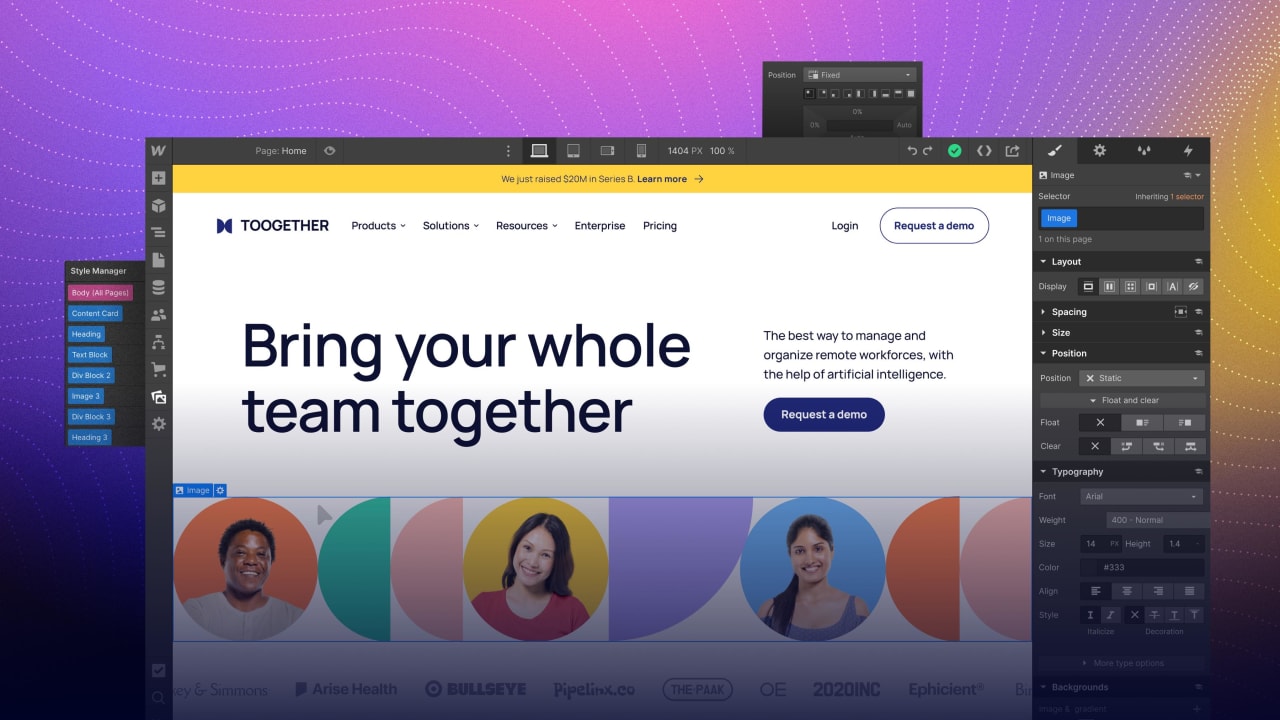The pandemic made a functional website an existential need for many businesses. Amid a shortage of tech talent, however, developing a sophisticated online presence presented a big hurdle for many companies. But what if a company could build a highly tuned site without needing a tech pro with programming fluency?

That was the idea behind Webflow’s no-code development platform, which offers a compelling solution for organizations without access to a development team. “We rallied our community to get as many no-code tools into the hands of people as we could, so they could build the sites that would help their businesses survive,” says Vlad Magdalin, Webflow’s cofounder and CEO. By unlocking the ability for companies to quickly and efficiently built highly sophisticated websites, Webflow earned a spot on this year’s list of Fast Company‘s Most Innovative Companies.
EMPOWERING POTENTIAL
Webflow’s platform provides a visual interface that web designers and marketing teams can use to create the kinds of professional websites front-end engineers build, without having to write a single line of code. Historically, web development has required a choice: hire programmers to achieve maximum flexibility and customization or use a simple template-based website builder with limitations on what you can feasibly design. Webflow eliminates that tradeoff by giving everyone the ability to create a truly custom website without requiring a four-year degree or decades of code-writing experience.
The company’s ability to deliver on that promise stems in large part from a team culture that is focused squarely on helping customers unlock their growth potential. “We built a culture where there’s an obsession over what empowerment we can bring to customers,” Magdalin says. “That attracts people who are really motivated by helping others.”
And when those customers no longer need to rely on software engineers for code, those engineers are in turn empowered to take on increasingly complex challenges that no-code solutions can’t yet solve. The result: more innovation, better products, and better experiences.
“By democratizing the ability for people to enter a valuable industry without the barrier of having to learn how to code, we can unlock their ability to do more impactful work and even earn a living,” Magdalin says. “That’s what keeps me inspired and motivated, and that’s what keeps our team going.”
UNLEASHING CREATIVITY
This ethos of empowerment has led to Webflow’s most recent enhancements, including the addition of collaboration tools for web design agencies and marketing teams as well as enterprise-grade features such as advanced security, custom traffic scaling, and guaranteed uptime. While these additions triggered growth for the company among its larger customers, Magdalin insists Webflow isn’t targeting a more lucrative market so much as widening its reach.
In fact, he sees an opportunity to move beyond websites and into the broader universe of software development. Given the ever-increasing demand for software solutions, it will eventually become impossible to rely only on expert software engineers to meet that demand. Instead, Magdalin envisions a world in which everyone has the tools to build the software they need. That equation makes Webflow’s mission a benevolent disruption. “We have to democratize this skill to millions, if not billions, more people in order to meet the existing demand for web development and to reach the full potential of the internet,” he says.








